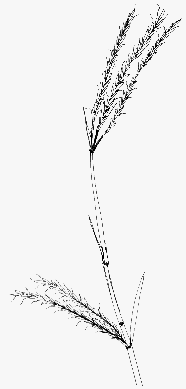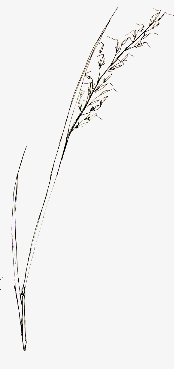
The Big Prairie Desert:
Shortly after the Native Americans were made to leave the area, lumbering started to the southwest near the city of Newaygo. From around 1835 to 1885 Newaygo must have been like a piece of the old west in the mid-west. Previous to settlement, deer and elk would have roamed the prairies (buffalo had probably not been present). Grisly and black bears, mountain lions, and wolves would have presented a real danger. Contact with Native Americans probably continued after settlement as they were moved a relatively short distance on large reservations. Boom towns sprung up around lumber mills and stagecoach stops. The 'Indian trails' were still used for overland travel and waterways were still the main travel routes. In 1872 railroads linked Grand Rapids to the city of Newaygo and then White Cloud a few years later. Click Here to view a map of the Newaygo area Circa 1830-1880 (a PDF file viewed with Acrobat Reader).These tall grasses grow over 6 feet by late summer & early fall.
Lumbering operations spread out from Newaygo until reaching the Big Prairie around 1850. The early pioneers in the prairie region settled around its edges so they could log the forest and farm the prairie. The prairie grass the pioneers called "buffalo grass" was misnamed. The prairie grasses that are noted in Newaygo County specifically are little bluestem (Andropogon scoparius), big bluestem or turkey foot (Andropogon gerardii), and Indian grass (Sorghastrum nutans). Most probably it was the bluestems and Indian grass that were the dominant grasses on the Big Prairie. Other grasses and prairie plants, along with shrubs and wildflowers, had undoubtedly grown on the Big Prairie as well. Early in the growing season the shorter 'cool-season' grasses and an abundance of wildflowers would flourish. Toward the end of summer the tallgrasses, or 'warm season' grasses, would take over and reach a height of over six feet by autumn. Local residents consider this thorny wildflower a nuisance. 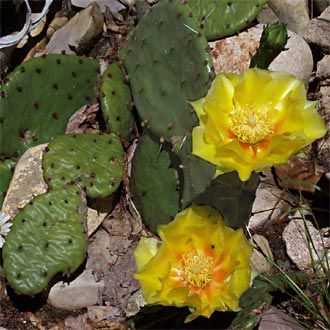
The prairies were considered by the early settlers to be unfit for grazing or farming. Many present-day prairie remnants were never farmed because the soil was considered very poor. The truth was probably that the prairie topsoil was slightly better than the soil of the cleared forests and was somewhat easier to farm because of the lack of trees. However, farming prairie lands wasn't easy because the prairie grasses grow a dense and very deep root system making the ground hard to till The farming practices of early settlers caused erosion of the topsoil. By the late 1870's the topsoil had vanished in the center of the prairie and the settlers who farmed there moved out to its edges. This was the beginning of the process that would create the Big Prairie Desert. This pattern of land use, dry conditions, and soil erosion is what caused the dust bowl that was beginning at about the same time in states further west. 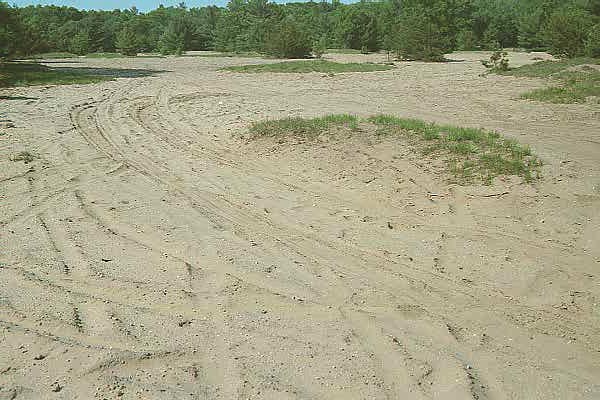
Through wind erosion and the continuance of soil-damaging farming practices, the desert grew in size until it reached the edges of the oak-pine barrens. Wind erosion "blows" caused huge sand dunes in some areas and exposed the rocky subsoil in others. The loss of soil created grassy hills held together by surviving plants and trees. These 'buffalo humps' (so-called by the settlers) reached from between three and six feet up to fifteen feet above the subsoil layer. These mesa-like formations along with, dunes, prickly pears, and an oasis left by a dying pond all created a desert-like environment that came to be called the Big Prairie Desert. In 1933, the Big Prairie Desert was acquired by the federal government and became part of the Manistee National Forest. By the late 1930s and early 1940s, the Big Prairie Desert was widely publicized as the largest desert east of the Mississippi River and had become a tourist attraction. Tourists would come to the desert on summer weekends to hike or drive over the dunes and picnic there. Like making lemonade from lemons, it was clever to bring tourist money into a depression-era economy by marketing a used-up and barren tract of land as an "eastern desert". 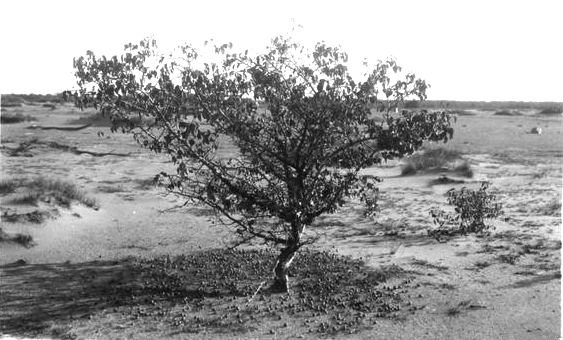
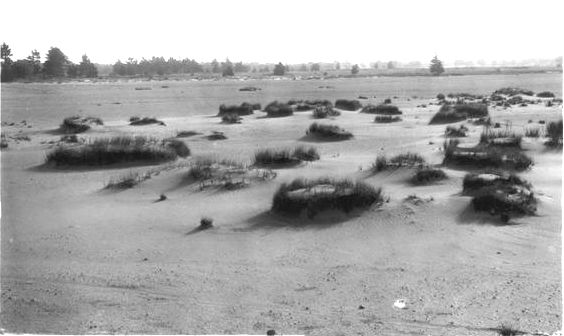
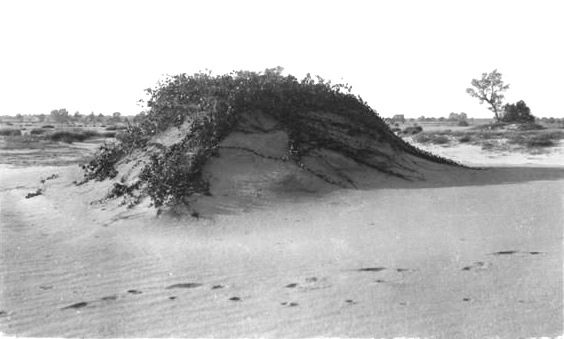
The destruction of the vast prairie habitat across the entire American Midwest was the cause of the dust bowl that was peaking at this time. Conditions were so bad that no amount of clever marketing could make any money from it. The dust bowl got so large that families abandoned their farms and became refugees in other states. The same thing was happening here in Michigan, local farmers were losing their income from the dustbowl they were creating. Rather than moving ever farther from the Big Prairie Desert, they petitioned the government to reclaim it before it grew larger and destroyed more farmland. Early tree planting by the Civilian Conservation Corps in 1938 and 1940 was lost to dry conditions and was planted again in 1941. In 1946 the U.S. Forest Service resumed planting with the help of local labor. By 1947 the planting covered all of the 535 acres of federally owned land in the desert with other plantations in remaining prairie areas. After more land was acquired by the forest service, the total came to 945 acres planted by 1965. After thirty years of planting tree plantations and natural regrowth, the Big Prairie Desert was no more than a fading memory. Click Here to read Part 3 "The Big Prairie Desert: Michigan's Dustdowl" Click Here to Return To BPD Index
|
